Self-loading rifles by Liu Qinghen (Republic of China)
The developer of the first Chinese self-loading rifle was General Liu Qingen. This commander had a solid experience of participation in hostilities and understood the needs of the troops. Wanting to improve the combat capability of the Chinese army, he proposed his own version of self-loading weapons, which could ensure superiority in firepower over all potential adversaries. At the same time, however, due to the lack of serious experience in the design of small arms, General Liu was forced to resort to certain borrowings from foreign projects.
Liu Qingren was born on October 10 of the year 1869. In the early nineties, the future general and gunsmith designer graduated from one of the naval academies of China. In 1896, he took part in the Sino-Japanese War. During this conflict, Liu Qingen served in the Black Flag Army under the command of Liu Yongfu, who liberated Taiwan from invaders. After the end of the war, Liu Qingen returned to the mainland and entered the service at Arsenal Hanyang, where he began work as a technical specialist in manufacturing.
Later, Liu Qingen took part in the training program, thanks to which he was sent to study abroad, in Japan. In accordance with this trend, the specialist completed the school course, and then entered the Tokyo Imperial University, where he studied the mechanics and design of ammunition. After receiving a diploma, Liu returned to China and continued working at the old place. Education and some experience allowed a specialist to get into the official delegation visiting foreign enterprises. So, in 1909, he visited the enterprises of the German company Krupp.
Over time, Liu Qingen received a high-ranking post at Hanyang’s Arsenal, which allowed him to launch new interesting projects. In particular, having an idea of the latest foreign developments, Liu began to put forward a proposal to develop a self-loading rifle, which could be mass-produced in the interests of the Chinese army. Taking advantage of his official position and fulfilling his direct duties, the designer began developing the project with the aim of subsequently submitting finished samples to the army leadership.
The Chinese gunsmith had information about the development of self-loading rifles abroad, but he had no experience in creating such systems. As a result, Liu was forced to seek "help" from foreign developments. One of the self-loading rifles of recent design interested him with its original design. The most interesting from the point of view of further development and adaptation to Chinese requirements, according to Liu Qingen, was a self-loading rifle by Danish designer Soren Hansen Bang. This weapon used a gas engine of unusual design and by that time some tests had passed, and it was also suggested to potential customers.
Rifle S.Kh. Banga differed unusual automation based on the gas engine. Having studied this and other designs, the Chinese designer decided to borrow just such a system. The main idea of the projects of Bang and Liu was the use of a movable choke device, which, when fired, was supposed to shift under the pressure of powder gases, and then set the bolt group in motion with the help of a system of levers.
In accordance with the technical traditions of the time, the Liu rifle system had to have a long barrel and a set of mechanisms mounted on a long wooden bed with a butt. All the main mechanisms, including the trigger system and the store, were placed inside the box. From the point of view of general ergonomics, the prospective self-loading rifle should not be different from other rifle weapons of its class.
A prospective rifle was designed to use the Mauser 7,92x57 cartridge, because of which she received a rifled barrel with appropriate geometrical parameters. The length of the barrel was supposed to reach 647 mm (81 caliber). At the front of the barrel, rings were provided for fastening the thrust of the gas engine, and in the breech section there was a thickening designed to be connected with other weapon assemblies.
Directly on the muzzle of the barrel should have been installed a special device that served as the main part of the gas engine. The muzzle device consisted of two cylinders connected by a conical junction. At the bottom of the device were placed stops for communication with the movable rod. On the side of the rear cylinder there were three holes for the discharge of gases. By opening or closing these openings, it was possible to control the operation of the automation, turning it on or off. Thanks to this, the rifle could be used in both self-loading and manual modes.
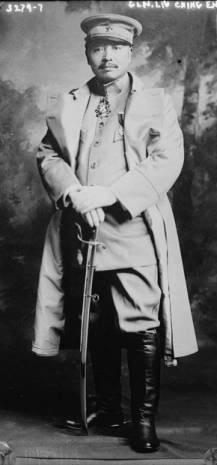
Liu Qingen, 1912 city. Photo by Alternatehistory.com
Liu's rifle did not get the receiver in the usual sense. All the main parts of the weapon had to be mounted on several parts of different shapes, mounted on the bed. So, the breech of the trunk was fastened with an elongated part of small height. In the front part there were attachments for the barrel, and in the lower surface there was a window for feeding cartridges. The back of this part was made in the form of two rails guides for the shutter. Nearby were return springs. The casing of the shutter is traditional for rifles design is not used. In the front lower part of the part there was a hinge for the swing arm used in the automation. To save space, the lever was placed at an angle to the vertical plane, the upper arm was to the right of the weapon axis, the lower arm was on it.
The bolt group was made in the form of a casing frame that contained the main parts, as well as several internal devices. The frame of the shutter could move freely along the guides under the action of the reloading handle, which was placed on the right wall, or with the help of an automatic lever. The forward movement was carried out using two separate return springs. The frame-casing had internal guides to control the operation of the shutter.
It was proposed to lock the barrel by turning the bolt, equipped with lugs. The rotation was performed using the interaction of the guide groove of the frame and the corresponding protrusion of the shutter. Inside the bolt placed the mainspring and drummer. There was also an extractor for capturing a spent cartridge case.
From the bottom, it was proposed to attach the support part-plate of the firing mechanism and the magazine to the screws on the wooden box. In the front part of it was fastened the box-shaped case of the store, inside of which a spring and a pusher were placed. The magazine held six rounds. At the back of the plate was a shock trigger mechanism of the shock type. Using the trigger, the drummer unlocked inside the gate was unlocked. The trigger was not used.
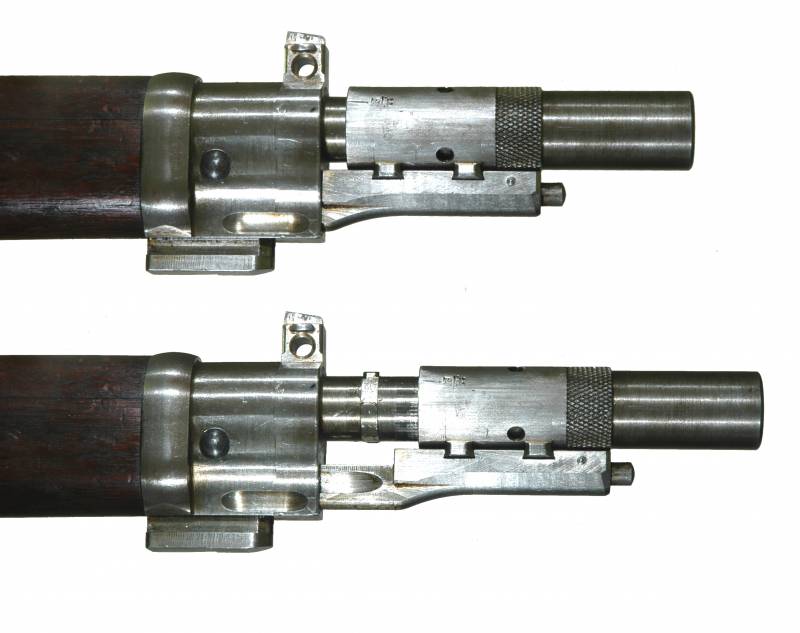
Muzzle rifle device. Above - a neutral position, below - a shift forward under the action of powder gases. Photo Forgottenweapons.com
The rifle received open sights, mounted on the upper surface of the barrel. Behind the muzzle device was a fly, and a mechanical sight was placed above the chamber. The design of the sight allowed to fire at a distance of up to 2 km, but the actual firing range, for objective reasons, could not exceed several hundred meters.
The fittings of the Liu Qingen rifle consisted of two main parts. All mechanisms were fixed on a long wooden bed with a butt and pistol protrusion. Inside the box there were cavities of the required size to accommodate mechanisms, rods, etc. From above the trunk was closed by an overlay. The final assembly of the rifle was carried out using a set of screws and clamps. Like other rifles of that time, the front strap, fastening the box and the lining of the barrel, was additionally equipped with a sling for the belt. Inside the butt, equipped with a metal back plate, there was a cavity for carrying cleaning supplies.
A new rifle could be equipped with a bayonet for melee. A bayonet with a knife-type blade and double-sided sharpening was used. Fastening the bayonet was carried out with the help of a ring on the crosspiece and a latch in the head of the handle. The ring was put on the front part of the muzzle device, and the handle channel was slid over the T-shaped protrusion under the barrel bushing. The fixing was made by a latch with a button. The bayonet was equipped with a scabbard designed for carrying on the belt.
The total length of the General Liu rifle without a bayonet reached 1,225 m with an 647-mm barrel. The mass of unarmed weapons was 4,7 kg. Cartridges and bayonet added another 300 g weight. The practical rate of fire of the weapon was 50 shots per minute. A relatively long barrel dispersed the bullet to the speed of 780 m / s.
As S.H. rifle. Bang, the development of Liu Qingen differed unusual principles of operation of automation. Also present were some of the characteristic and ambiguous features of operation, which were later noted in test reports as deficiencies.
To prepare the rifle for use, the bolt group should be moved to the rearmost position and a clip with 7,92x57 mm cartridges should be placed in the opened window. After filing the cartridges in the magazine and removing the cage, it was possible to return the bolt to the front position. At the same time, a new cartridge was sent and the barrel was locked. USM at this point was already cocked and could make a shot.
When the trigger was pressed, the drummer was unlocked, which resulted in a shot. Under the action of powder gases, the bullet passed through the barrel and left it. At this point, the powder gases fell into the cavity of the choke device and pressed on it, pushing forward. The muzzle device moved forward and led away behind itself the bent thrust placed under the barrel. Traction interacting with the lower arm of the lever. The lever turned and pushed the slide frame with its upper shoulder. Having received a push from the lever, the bolt group started moving backwards.
When the bolt carrier moves in the rear direction, the barrel is unlocked, the liner is removed and ejected, and the triggering is activated. After reaching the rearmost point, the slide group encountered a limiter and began to move forward, interacting with the return springs. On the way back, the bolt seized and sent out a new cartridge, and then turned and locked the barrel. In front of the trajectory, the slide frame pushed the upper lever arm, forcing it to return to its original position. At the same muzzle device went back to its original position. Weapons could make a new shot.
If necessary, the shooter could abandon the use of automation, “turning” the weapon into an ordinary magazine rifle with manual reloading. For this, the muzzle device was turned at a certain angle clockwise, which led to the blocking of the mechanics. After that, recharging was performed by reciprocating the bolt group with the help of a side grip.
Arsenal of Hanyan was not distinguished by advanced production facilities. This organization could produce magazine rifles, but self-loading systems were beyond its capabilities. It was not necessary to count on an independent mass production of such weapons, although Arsenal still managed to collect a prototype of a Liu rifle. Verification of this product showed the performance of unusual automation and allowed to continue work.
To continue the work, Liu Qingen needed the help of other organizations with the required production capacity. In January, Arsenal Hanyana signed a contract with the American company Pratt & Whitney Tool Company, according to which the two organizations would jointly continue the development of the existing project. In April of the same year, another agreement appeared. Shortly thereafter, Liu and his family and seven specialists from the Chinese arsenal went to Hartford, Connecticut to continue work in cooperation with their American colleagues.
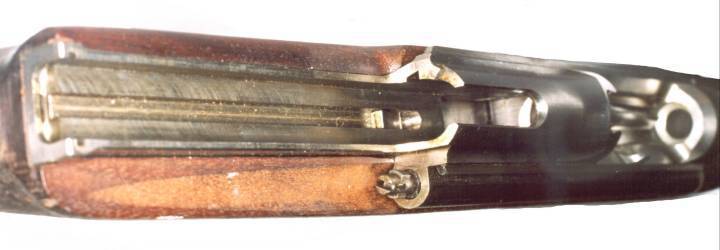
The back of the receiver with guides for the bolt group. Photo Chinesefirearms.com
In the summer of 1916, the American plant produced one and a half hundred Liu rifles, which were planned to be used in trials at Chinese test sites. In August, the first batch of weapons was handed over to specialists of the Republic of China, who conducted comprehensive inspections. According to the test results, a report was compiled, in which both the advantages and disadvantages of the new weapon were noted. In general, the rifle of Liu Qing was of interest to the army, but before starting full-scale production, it was necessary to get rid of some shortcomings.
It was noted that the semi-automatic rifle was approximately 600 g heavier than the weapons of a similar class that were in service with the army. The reason for criticism was not enough heavy trunk with relatively thin walls. Such a detail during long shooting had the ability to overheat, worsening the accuracy of shooting. There were also claims to the resource trunk. Foreign-made barrels already had a resource at the level of 5 thousand shots, while the parameters of the rifle Liu raised questions. The muzzle device of the gas engine showed sensitivity to pollution and could fail in some situations.
Additional claims related to dubious ergonomics and weapon safety. During firing in dangerously close to the face of the arrow the bolt group moved. In some cases, metal parts at high speed approached the shooter's face in less than 10-12 cm. This led to certain risks.
If a decision was made on the serial production of new rifles, Chinese industry would have to solve a number of critical tasks. The arsenals of the Republic of China lacked a number of necessary machines. In addition, the Chinese industry did not produce some of the steel grades needed to manufacture General Liu rifles. Thus, the delivery of foreign equipment and raw materials was required. All this is not the best way could affect the cost of the finished product.
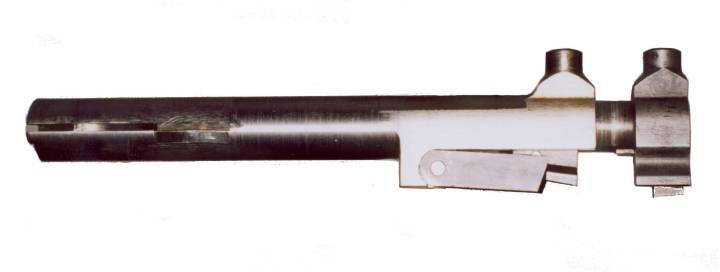
Shutter rifle Liu. Photo Chinesefirearms.com
According to the test results, the author of the project received a list of necessary improvements. In addition to the technical problems of existing weapons, new wishes of the military were expressed in it. Thus, instead of the existing six-round magazine, it was proposed to develop a larger-capacity ammunition system. At first, the military wanted to get a magazine for 10 cartridges, later on 15. An all-in-one box magazine of such a capacity should have protruded beyond the lodge.
By February 1917, a prototype of an updated rifle with an improved design was released by the forces of the Hanyang Arsenal. This version of the weapon received the symbol Mk II, while the basic modification was named "Liu Mk I". The military soon tested the prototype and approved the production of a pre-production batch. Like last time, it was planned to entrust mass production to the American company Pratt & Whitney Tool Company. Production was supposed to start in April, but the entry of the United States into the First World War led to a serious delay in its start.
Establish the production of Liu rifles of the second version was only in 1918 year. In this case, the weapon was not made from scratch. 120 units of weapons of basic modification equipped with new barrels, shops and other details. Weapon conversion work continued until the autumn of 1918, after which the finished products were handed over to the Chinese military.
At the end of 1918, the Liu rifles of the second version were handed over to one of the elite army units that was to take part in the battles. During the operation of the new weapon it was found that it retained some negative features. For example, in the course of modernization, the problem with the rifle's susceptibility to contamination was not solved. In addition, the use of self-loading rifles led to excessive, according to the command, the consumption of ammunition. According to the results of the second stage of military tests, it was decided that Liu semi-automatic rifles should be used only by elite units of the army and some police units. Other military proposed to continue the operation of the store rifles.
In the fall of 1918, an important decision was made regarding the further production of self-loading rifles. It was decided to end cooperation with the American enterprise in the production of finished weapons. At the same time, it was proposed to order machines and other equipment from the Pratt & Whitney Tool Company, with the help of which the Hanyan Arsenal could independently produce new weapons. Soon there was an official order for the machines, which had to be fully completed within two years.
In the summer of 1919, a ship loaded with industrial equipment for an arsenal sank. From such news, Liu Qingyan suffered a stroke. The designer was still alive, but remained paralyzed. In this state, he could no longer continue to work on the development of small arms and occupy a high post in Arsenal of Hanyan. General Liu resigned, leaving a promising project to his colleagues.
The new leadership of the arsenal did not share the enthusiasm of the designer, and chose to release existing weapons instead of self-loading systems. Because of this, the first production Liu Mk II rifles were released only at the end of the autumn 1921 of the year. Production was carried out at a rate of about 60 products per week. Just a couple of months after the start, the production of self-loading rifles was curtailed due to the reduction of army orders.
Rifles of two types continued to be used by some units, but a small number of such products did not even allow thinking about the complete rearmament of troops. Over time, the available weapon has developed its resource and was written off or sent to storage. The military no longer saw the point in self-loading rifles, which is why the projects of General Liu seemed to have no future.
Liu rifle production was resumed only in 1938 year. A few years after the start of the war with Japan, the military leadership of China realized the need for self-loading rifles. On the basis of existing projects was developed rifle "Liu Mk III", differing in some features of the design. According to some information, an attempt was made to add an automatic fire mode, but the powerful rifle cartridge quickly put an end to these works. The new start of production of rifles "General Liu" allowed only partially to close the existing needs and, in general, did not affect the course of the war.
There is evidence of the existence of the project "Liu Mk IV". It was a slightly reduced version of the previous rifles, designed for use of the German 7,62x33 mm Kurz intermediate cartridge. The first samples of such weapons were released in the 1943 year, which makes it possible to consider this version of a self-loading rifle as one of the world's first automatic weapons. Until the end of the war with Japan, the Mk IV rifles were produced in small batches and used by the Chinese infantry. Due to the small number, however, such weapons did not leave a noticeable mark in stories.
It is known that of all the Liu rifles of the Mk I and Mk II versions, only a few items are preserved. Currently, they are kept in museums and private collections. Due to the limited serial production of such weapons is of particular collection value, although it can not boast a well-known. Information about the surviving rifles of later modifications are missing.
Liu Qingen began work on his version of the semi-automatic rifle at the end of the first decade of the 20th century. Over the next ten years, he created two versions of the weapon, representing the development of the original automatics of the Danish designer S.Kh. Banga Such weapons were of particular interest to the army, and were even tested in practice. However, for various reasons, the army of the Republic of China was not interested in the self-loading rifle and refused to issue it in large quantities. Later, after two decades, this error was corrected, but it was already too late. The refusal of Liu rifles seriously hit the development of Chinese small arms and did not allow the required rearmament of the army to be carried out in time.
On the materials of the sites:
http://thefirearmblog.com/
http://alternatehistory.com/
http://forgottenweapons.com/
http://chinesefirearms.com/
http://forum.axishistory.com/


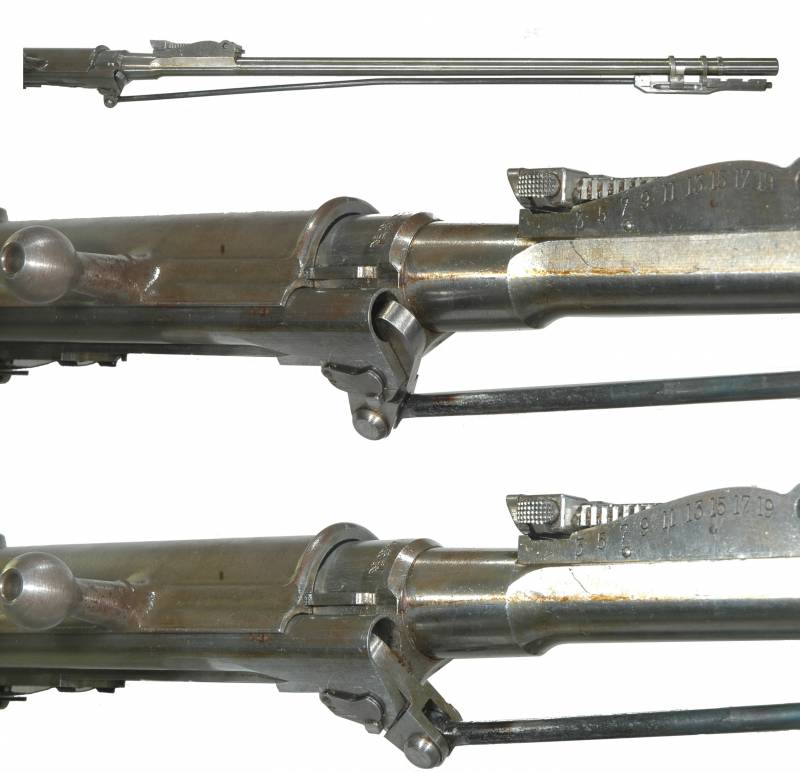
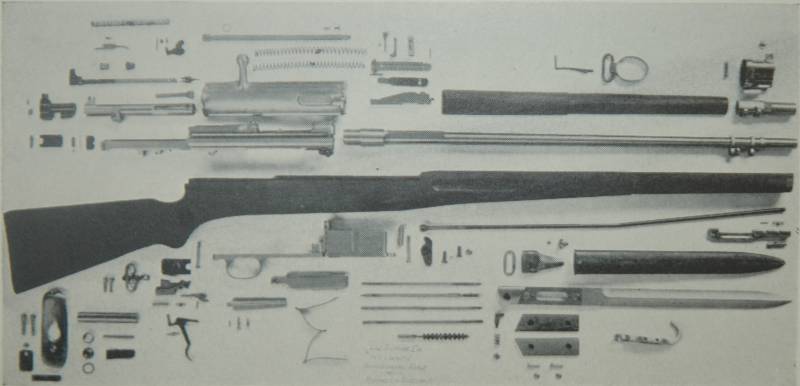
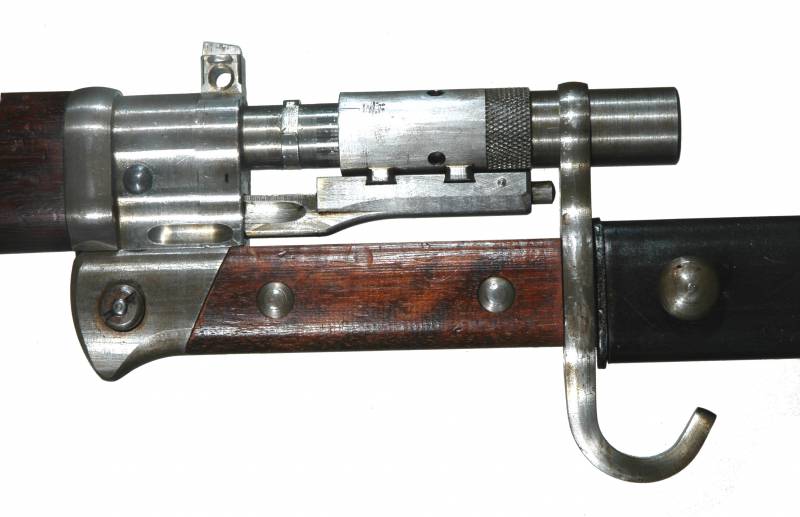
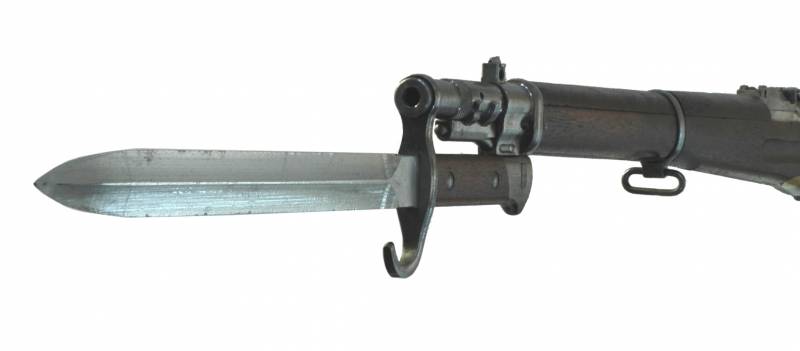
Information